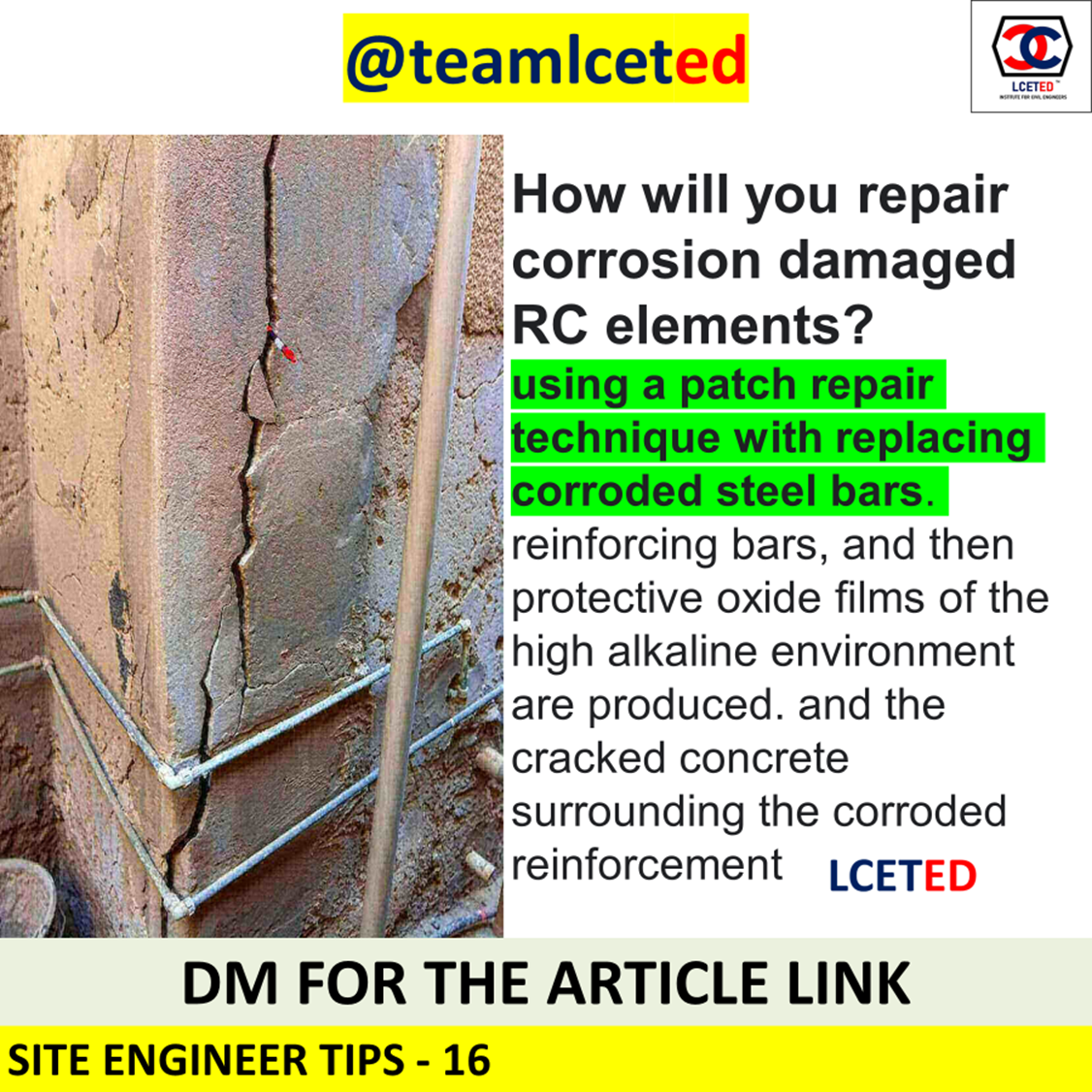In this article, we will explain the repair process for Reinforced concrete beams and columns damaged by steel corrosion where the depth of the affected concrete has reached the reinforcement level. As the amount of steel rust exceeds that of the original steel, the concrete around the steel cracks. In some cases, the cover concrete may fall off. Corrosion can be caused by carbonation or chloride.
The
following procedure is followed to repair these reinforced concrete members.
The main difference between slabs from columns and beams is that for the latter, a
more elaborate formwork must be used to place the concrete. Otherwise, we can
place concrete with shotcrete
Repair
of Cracks in Beams and Columns when Corrosion has Reached Reinforcement Level
Step 1: As
these members carry heavy loads, first support the beam and column using
supports to relieve part of its load. Then, remove the damaged concrete to
expose the steel.
Step 2: Investigate
the type of corrosion with phenolphthalein tests to determine whether the
corrosion is due to carbonation or chloride effect. Also, determine the depth
to which erosion has continued. If it's due to carbonation, it's worth fixing.
But if it is due to chloride corrosion, the same corrosion can occur elsewhere
if the concrete near the steel is not completely replaced. Here, we assume that
carbonation is the only cause of corrosion.
Step
3: If the steel is completely corroded, remove 15mm to 25mm of concrete from
the entire steel.
Step 4: Clean the concrete surface and steel surface
thoroughly with water. A rust removal solution can also be used for steel. It
dissolves the rust and adheres to the steel as a coating.
Step 5: When the steel is reduced by about 15%
due to corrosion, place the necessary additional steel and bond it properly
with the old steel or additional support. New steel can also be supported by
spot welding to old steel. Place required shear reinforcements for beams and
binders for columns.
Step 6: Apply proper bonding coat to the old concrete
surface and steel surface.
Step 7: If necessary, attach the formwork to the
column for concreting the removed area. For columns, it is easy to place
formwork or self-compacting concrete for pouring concrete. For beams, it is
more convenient to use expanded wire mesh
Step 8: Before the bond coat dries, compact the
void space of the member with cement, sand, small coarse aggregate (10mm and
below) and micro concrete with superplasticizer as required. Water-cement ratio
should not exceed 0.5. In some cases, we may have to use self-compacting
concrete. This is achieved by using concrete chemicals such as
superplasticizers. For patch repairs or repairing small areas, we usually use
simple polymer-modified cement mortar. For larger repairs, it is better if we
use shotcrete to fill the removed area.
Step 9: Apply a 1:3 (finely sanded) coating
within 48 hours of completing Step 8.
Step 10: Wet curing should be done for at least 7
days.
Step 11: After complete drying, a coat of
waterproof paint is given to protect the member and match the surrounding
surfaces. Note: In larger jobs, it is better to place concrete or mortar using
shotcrete, also known as gunite.
Conclusion: This article
briefly deals with the repair of beams and columns damaged by the corrosion of
steel.
Reference: Handbook on Repair and Rehabilitation of RCC
Buildings, CPWD, New Delhi, 2002.










No comments:
Post a Comment